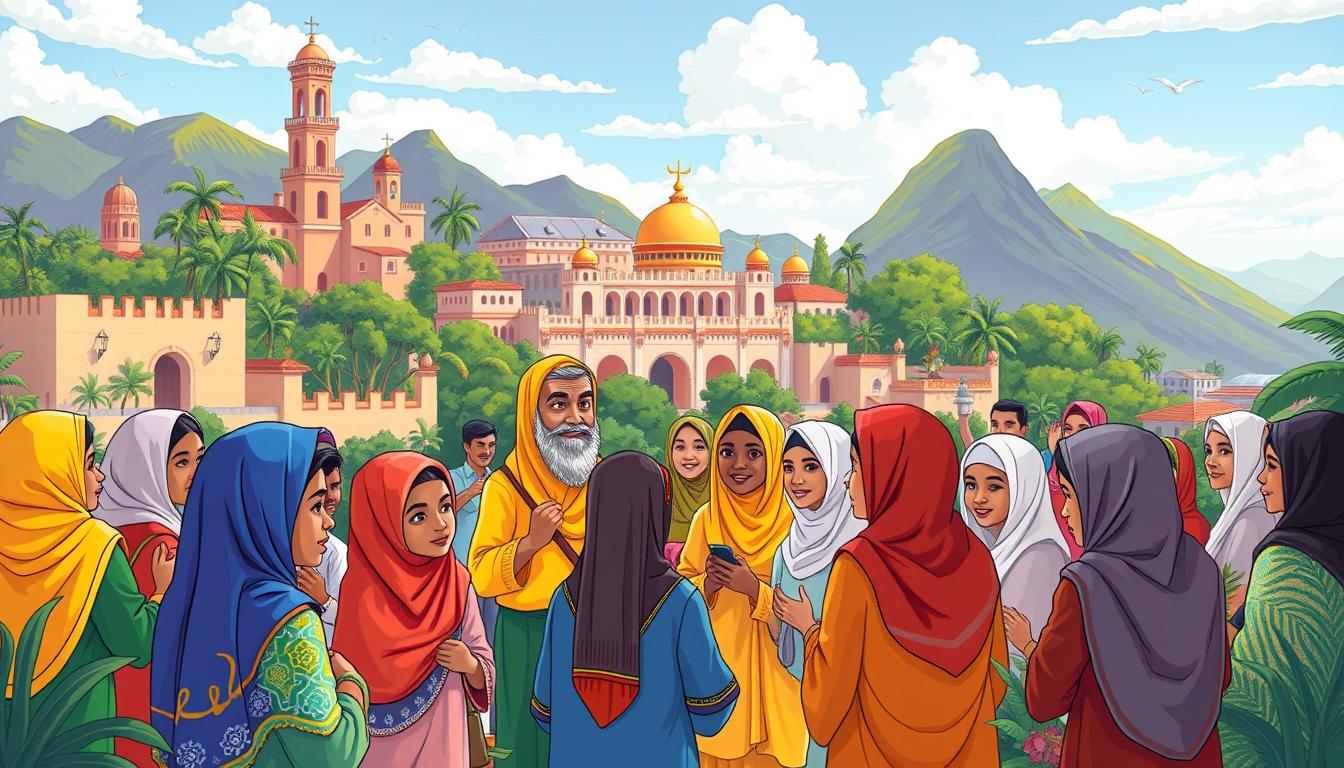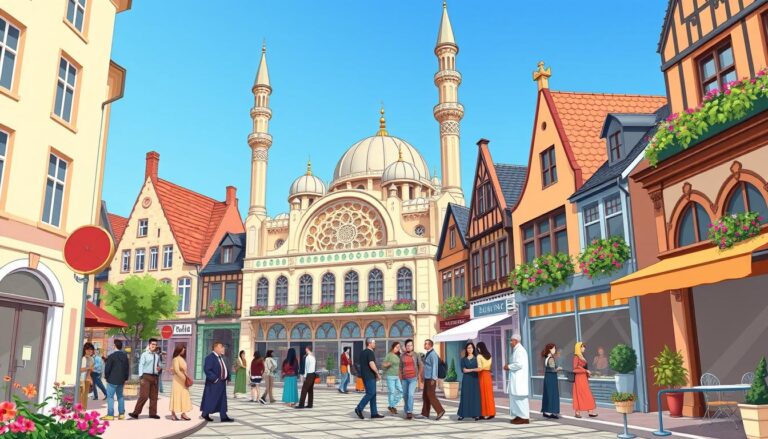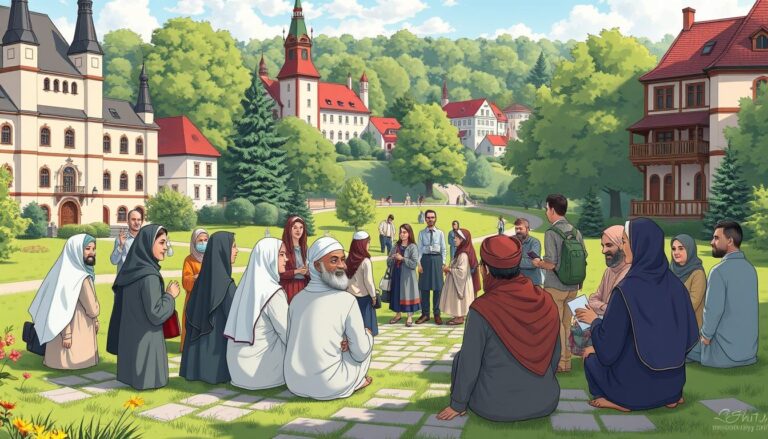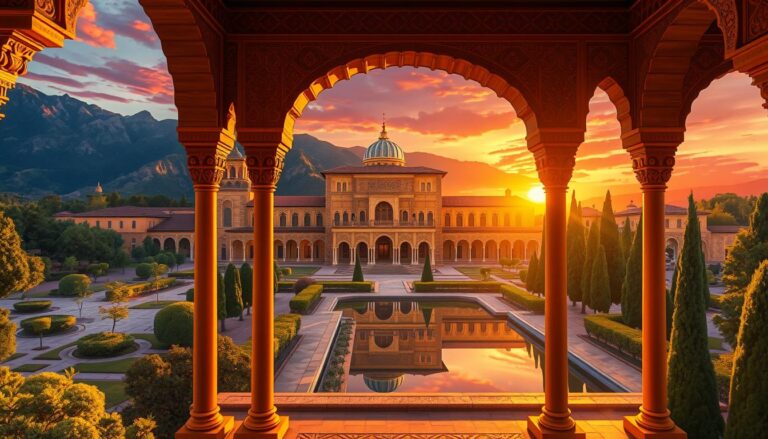Islam in Brazil
Contrary to popular belief, Islam is not just a religion confined to the Middle East or North Africa. In fact, Brazil is home to the largest Muslim community in Latin America, with over 200,000 Brazilians practicing the faith. This may come as a surprise, given that Brazil is predominantly known as a Christian-majority country. However, the story of Islam’s presence and growth in Brazil is a fascinating one, intricately woven into the nation’s history and culture.
Key Takeaways:
- Islam has a long and significant history in Brazil, dating back to the arrival of African slaves and later waves of immigration from the Middle East.
- The Muslim population in Brazil, while small compared to the overall population, has been steadily growing, with an estimated 35,207 Muslims as of the 2010 census.
- Brazilian Muslims come from diverse backgrounds, including Arab, African, and local converts, and practice both Sunni and Shia Islam.
- Islamic culture and practices have influenced various aspects of Brazilian society, from cuisine to architecture.
- Despite some challenges and instances of discrimination, the Muslim community in Brazil continues to play a meaningful role in the country’s social and cultural fabric.
Introduction to Islam in Brazil
Islam has a rich and complex history in Brazil, dating back to the arrival of West African slaves during the transatlantic slave trade. These early Muslim immigrants, including Hausa, Malinkes, and Yoruba, faced significant challenges in practicing their faith, but a thriving community nonetheless emerged in the 19th century. By the 1860s, an estimated 20,000 Muslims were living in Salvador, the capital of the state of Bahia.
History of Muslim Immigration and Influence
The story of Islam in Brazil continued to unfold with later waves of immigration, primarily from the Middle East and South Asia. These immigrants have contributed to the growth of the Brazilian Muslim population, which is now estimated to be around 200,000, making it the largest Muslim community in Latin America. The community is predominantly Sunni, with a smaller Shia population.
Demographic Overview of Brazilian Muslims
The demographic composition of Brazilian Muslims is diverse, reflecting the country’s broader cultural and ethnic diversity. While the exact number of Muslims in Brazil is a subject of debate, ranging from 37,000 to over a million, the community’s presence and influence have been undeniable throughout the nation’s history.
“The number of Muslims in Brazil is estimated to be either 37,000 or over a million, showcasing the uncertainty in the statistical count.”
The African Slave Trade and Early Muslim Presence
The history of Muslims in Brazil is deeply intertwined with the nation’s dark past of the African slave trade. Over 3 million enslaved Africans were brought to Brazil, and a significant number of them were Muslims. These early Muslim slaves faced immense oppression and restrictions on their religious practices, but they managed to maintain their faith and even plan uprisings against their oppressors.
Malê Revolt: A Significant Uprising
One such uprising was the Malê Revolt of 1835 in Bahia, which was the largest slave rebellion in Brazil and the largest urban slave revolt in the Americas. Around 300 Africans, mostly Muslims, participated in the Malê Revolt, which had significant nationwide repercussions. The revolt, although short-lived, led to increased efforts by the Brazilian authorities to suppress the African Muslim community.
“The Malê Rebellion, an uprising led by African Muslims in Salvador in 1835, involved around 600 Malê warriors.”
The legacy of the Malê Revolt continues to be felt in Bahia today. The Afro-Bahian musical and cultural group Malê Debalê carries a message of social, cultural, and political resistance, highlighting issues such as apartheid, police brutality, and political inequalities in Brazil.
The African slave trade and the early presence of Muslims in Brazil have left an indelible mark on the country’s history. Despite facing immense challenges, the Muslim community has persevered, and their influence can still be felt in Brazil’s culture, architecture, and cuisine.
Waves of Arab and Middle Eastern Immigration
Following the Malê Revolt and the decline of the African Muslim community in Brazil, the next significant period of Arab immigration to Brazil and Middle Eastern immigration to Brazil was driven by Muslim immigration from the Middle East and South Asia. Starting in the late 19th century, waves of Syrian and Lebanese immigrants, many of whom were Maronite and Orthodox Christians, arrived in Brazil.
The largest concentration of Muslims in Brazil is found in the greater São Paulo region, and there is also a growing Bangladeshi Brazilian community. The influence of these Muslim immigrants can be seen in the country’s architecture, cuisine, and businesses, such as the second-largest fast-food chain in Brazil, Habib’s, which serves Arab food.
“Approximately 400,000 Asians, Arabs, and Jews immigrated to Brazil out of the 4.5 million immigrants who entered the country between 1872 and 1949.”
The early Arab immigrants faced hostilities, thefts, and even murders in communities throughout Brazil, as reported in newspapers from the period. However, by the 1940s, communal relations among Arab Christians, Muslims, and Jews in Brazil changed due to the establishment of the State of Israel in 1948 and conflicting views on the matter.
The cultural impact of the Moors, particularly in regions like Argentina and Brazil, is still felt today, and a multicultural origin is stressed by experts to counter Eurocentric views dominant among the Latin American elite.
The influence of Arab and Middle Eastern immigration to Brazil can be seen in the country’s architecture, cuisine, and businesses, with the establishment of the Arab-Brazilian Chamber of Commerce in 1952 aimed at strengthening economic ties between Brazil and Arab countries.
Islam in Brazil in the Modern Era
Population Growth and Distribution
Brazil’s Muslim population has experienced significant growth in recent decades. According to the 2010 Brazilian census, there were 35,167 Muslims living in the country, primarily concentrated in the states of São Paulo and Paraná. This represents a notable increase from the 22,450 Muslims counted in 1990 and the 27,239 in 2000.
The Muslim community in Brazil is overwhelmingly Sunni, with the Sunni population being largely assimilated into broader Brazilian society. However, there is also a growing Shia community, particularly in small, insular communities in São Paulo, Curitiba, and Foz do Iguaçu. In addition, there has been a recent trend of increased conversions to Islam among non-Arab Brazilians, with an estimated 10,000 Muslim converts in the country.
The number of mosques in Brazil has increased from 70 to 115 within about ten years, and the number of Sheiks who speak Portuguese has tripled in the same interval. The Brazilian Sheiks in the country have increased from 3 to 7 in the last ten years. In 2008, approximately 60% of women wore the veil as part of their Islamic practice, which has risen to between 90% and 95% today.
Across all states of the federation, there is at least one Mosque, Mussala, charity, or Islamic society cemetery. Islamic practices in Brazil have evolved from Arabic Middle Eastern immigration of the late nineteenth and twentieth centuries. The estimated Muslim population in Brazil is approximately 1 million people, making up a small but significant portion of the country’s over 170 million inhabitants.
“In Manaus, a mosque was established just three years ago, and there are 94 Islamic institutions in Brazil presently, whereas in 2002 there were 58 and in 1983, 33.”
Muslim Converts and Increasing Visibility
One of the notable trends in the Brazilian Muslim community is the rise in conversions to Islam among non-Arab citizens. It is estimated that there are close to 10,000 Muslim converts living in Brazil. Over the past 30 years, Islam has become increasingly visible in Brazilian society, with the construction of not only mosques but also libraries, arts centers, and schools, as well as the funding of newspapers. This growing visibility is reflected in the fact that 2 of the 3 existing Portuguese translations of the Quran were created by Muslim translators in São Paulo.
The Muslim presence in Brazil is not limited to immigrant communities. Cesar Kaab Abdul established a mosque in Jardim Cultura Fisica, a slum in the Sao Paulo metropolitan area, in 2012, signaling a physical presence of Islam in such neighborhoods. Similarly, the mosque created by Muhammad Lucena in Passo Fundo gathers 1,000 people, with about 150 Brazilian converts and the majority comprising West African and South Asian individuals, primarily workers in halal units in meat and poultry processing plants.
The conversion of Kareem Malik Abdul, a master of capoeira, showcases the influence of Islam on his teaching methodology, particularly emphasizing safety, limitations, and inclusivity. This highlights the growing appeal of Islam among Brazilians, even in cultural spheres traditionally associated with the country’s identity.
“The conversion of Kareem Malik Abdul, a master of capoeira, showcases the influence of Islam on his teaching methodology, particularly emphasizing safety, limitations, and inclusivity.”
The increasing visibility of Muslim converts in Brazil is a testament to the evolving religious landscape of the country. As Islam continues to attract the attention of both curious Brazilians and new converts, it is poised to play a more significant role in the cultural and social fabric of the nation.
Cultural and Culinary Influences of Islam in Brazil
The presence of Islam in Brazil has left a lasting impact on the country’s culture and cuisine. From the architectural influences of Arab-inspired designs to the proliferation of Arab-influenced dishes in the Brazilian food scene, the Islamic footprint is undeniable.
One of the most visible examples of this cultural exchange is the prominence of the Habib’s fast-food chain, the second-largest in Brazil. Serving up Arab-inspired dishes, Habib’s reflects the culinary influence of the Muslim community in the country. Additionally, the textile industry in Brazil is largely dominated by merchants of Syrian-Lebanese origin, many of whom are of the Christian faith, further demonstrating the diverse cultural impact of the Arab and Muslim presence.
“The musalla (prayer space) in a low-income neighborhood in Greater São Paulo indicates the increasing adoption of Islam among Brazilians.”
The Islamic influence on Brazilian culture extends beyond the culinary realm. The growing number of Muslim converts in recent years has contributed significantly to the spread of the religion in the country. The musalla community in the urban slum of Embu das Artes, for instance, is said to be the only one of its kind in Brazil, highlighting the prevalence of conversions and the Arab influence in Brazil.
As the Islamic cuisine in Brazil continues to evolve, the country has also emerged as a major player in the global halal market. Brazil is now the world’s largest exporter of halal protein, catering to the growing demand from Muslim consumers worldwide. This economic opportunity has also prompted efforts to develop Muslim-friendly tourism in Brazil, particularly in destinations like Foz do Iguaçu and the Federal District.
The cultural and culinary integration of Islam in Brazil is a testament to the country’s diversity and the enduring influence of the Arab and Muslim communities. As the Islamic presence in Brazil continues to grow, it will undoubtedly shape the nation’s rich tapestry of traditions and flavors for generations to come.
Islamic Architecture and Mosques in Brazil
Brazil is home to a rich tapestry of Islamic architecture and mosques, reflecting the nation’s diverse Muslim community. With over 150 mosques across the country, these sacred spaces serve as hubs for religious, educational, and cultural activities.
Notable Mosques and Islamic Centers
One of the most prominent examples is the Mesquita Brasil (Mosque Brazil), founded in 1929 by the Muslim Beneficent Society of São Paulo. This historic mosque, located in the Cambuci district of São Paulo, is the oldest in the country. The construction of the first Brazilian mosque began in 1940 and was officially inaugurated in 1960, attended by Arab and Brazilian officials, including H.E. Hussein Zulfaqqar Sabry, the Deputy Foreign Minister of the United Arab Republic.
The architectural style of these mosques often draws inspiration from the late-nineteenth to early-twentieth-century tradition of Afro-Brazilian architecture, seen in mosques built along the western coast of Africa from Lagos, Nigeria to Dakar, Senegal. This unique style, influenced by Portuguese Catholicism, showcases the rich cultural exchange between Christianity and Islam in the region.
The wealth and social status of prominent Muslim patrons, such as Mohammed Shitta of the Shitta Bey Mosque in Lagos, have also contributed to the development of these impressive Islamic structures. The Afro-Brazilian mosques reflect the legacy of aesthetic tradition from Christian-Muslim encounters in medieval North Africa and Iberia, extending to colonial Brazil and back to Africa in coastal colonial ports.
These mosques and Islamic centers play a vital role in the lives of Brazil’s Muslim community, serving as spaces for worship, education, and cultural exchange, and contributing to the rich tapestry of the nation’s architectural and religious heritage.
Islam in Brazil
Islam in Brazil is a diverse and growing community, with a rich history tracing back to the transatlantic slave trade and the famous Malê Revolt of 1835. The Brazilian Muslim population is estimated to be around 200,000, making it the largest Muslim community in Latin America. This vibrant community encompasses both immigrants and Brazilian converts, with a predominantly Sunni faith and a smaller Shia population.
The influence of Islam in Brazil can be seen throughout the country’s cultural and culinary landscape. From the captivating architecture of mosques to the prevalence of Arab-inspired cuisine, the Muslim community has left an indelible mark on the Brazilian identity. Despite facing some challenges and instances of discrimination, the Muslim community in Brazil continues to integrate and contribute to the nation’s celebrated diversity.
“The Muslim community in Brazil has always been a vital part of the country’s cultural tapestry, bringing a unique blend of traditions and beliefs that have enriched the lives of Brazilians for generations.”
The diversity of the Brazilian Muslim community is a testament to the country’s openness and acceptance. This community includes individuals from a variety of ethnic and national backgrounds, united by their shared faith and commitment to their cultural heritage. From the descendants of African slaves to the more recent waves of Arab and Middle Eastern immigrants, the Muslim community in Brazil represents a vibrant and multifaceted aspect of the nation’s identity.
As the Muslim community in Brazil continues to grow, it faces both opportunities and challenges. While the country’s constitution guarantees religious freedom, the Muslim population has at times faced instances of Islamophobia and intolerance. However, the resilience and determination of this community have allowed them to overcome these obstacles and forge strong connections with their fellow Brazilians.
In the years ahead, the story of Islam in Brazil is poised to continue unfolding, with the Muslim community playing an increasingly visible and influential role in shaping the nation’s diverse cultural landscape. As Brazil embraces its religious diversity, the Muslim community stands as a testament to the country’s ability to celebrate its multifaceted identity and the richness that comes with it.
Challenges and Discrimination Faced by Muslims
While the Muslim community in Brazil has largely been able to practice their faith freely, they have faced some challenges and incidents of discrimination. A recent survey found that 70% of respondents knew someone who had experienced religious intolerance since the outbreak of the war in Gaza in October 2022, with Muslim women reporting slightly higher rates of harassment, such as being called “Hamas daughter” or “Hamas terrorist.”
Some Muslim Brazilians have also reported physical attacks, including attempts to tear off their hijabs, as well as verbal harassment from Evangelical Christian groups. These incidents of Islamophobia and intolerance have raised concerns about the need for greater education and awareness to promote religious tolerance in Brazilian society.
Incidents of Islamophobia and Intolerance
- Reports showed a rise of 1,000% in denunciations of Islamophobia to the National Association of Muslim Jurists since the start of the war on October 7th.
- In 2021, there were 581 calls reporting religious intolerance received by the National Human Rights Hotline, compared to 566 reports in 2020 in Brazil.
- During the same year, federal police investigated 36 cases of violations of the country’s laws against the use of symbols to publicize Nazism in Brazil.
- The Israelite Federation of Sao Paulo State’s annual Antisemitism Report recorded 57 incidents and allegations of antisemitism from January to July, compared to 149 incidents during the same period in 2020.
These challenges faced by Muslims in Brazil, Islamophobia in Brazil, and discrimination against Muslims in Brazil underscore the need for continued efforts to promote religious tolerance and understanding in the country.
Contributions and Integration of Muslims in Brazilian Society
Despite the challenges faced by the Muslim community in Brazil, they have made significant contributions to the country’s society and culture. Muslim Brazilians are actively involved in various sectors, including medicine, law, and politics, with a Muslim city councilor in São Paulo. The Muslim community has also left its mark on Brazilian architecture, cuisine, and business, with the Arab-inspired fast-food chain Habib’s being one of the largest in the country.
The integration of Muslims in Brazilian society has been a gradual process, but their influence is becoming increasingly prominent. As the Muslim population continues to grow, their influence and contributions are likely to become even more visible in the years to come.
One of the notable examples of the Muslim influence in Brazil is the Arab-inspired fast-food chain Habib’s, which has become one of the largest in the country. The chain’s success is a testament to the integration and acceptance of the Muslim community in the Brazilian business landscape.
Additionally, Muslim Brazilians have made significant contributions to the fields of medicine, law, and politics. The presence of a Muslim city councilor in São Paulo, for instance, demonstrates the growing representation and integration of the Muslim community in Brazilian politics.
The Muslim community’s impact on Brazilian architecture and cuisine is also noteworthy. The architectural styles and culinary traditions of the Middle East have been seamlessly incorporated into the fabric of Brazilian culture, further enriching the country’s diverse heritage.
As the Muslim population in Brazil continues to grow, their contributions and integration into Brazilian society will likely become even more pronounced. The future holds the promise of an increasingly diverse and vibrant Brazil, where the Muslim community plays a vital role in shaping the country’s cultural landscape.
“The Muslim community in Brazil has made significant strides in integrating into the broader society, while also preserving their cultural identity. Their contributions to various sectors of the country are a testament to the richness and diversity that make Brazil a truly unique and dynamic nation.”
Role of Islamic Organizations and Community Centers
Islamic organizations and community centers play a crucial role in supporting and nurturing the Muslim community in Brazil. These institutions serve as vital hubs, providing a space for religious practices, educational activities, and cultural gatherings. They are essential in fostering a sense of community and belonging among Brazilian Muslims, as well as in representing their interests and promoting interfaith dialogue.
One of the notable examples is the Av. Do Estado Mosque in São Paulo, which houses a Quranic school, library, kitchen, and meeting hall. Another significant institution is the mosque built by Ismail Hatia in Campinas, serving the local Muslim population. These centers and organizations play a crucial role in maintaining and promoting Islamic traditions and values within the Brazilian context.
The Federation of Muslim Associations of Brazil (FMAB) is a prominent organization that oversees the interests of Muslims in the country. Established in 1979, the FMAB has contributed to the construction of more than 10 mosques across different Brazilian cities. Additionally, the National Union of Islamic Institutions in Brazil includes 22 Islamic institutions, further strengthening the presence and influence of the Muslim community.
- The first mosque in Brazil was constructed in 1940 and opened for worship in 1956, making it the first mosque in South America.
- Muslims in Brazil have a Supreme Council for Islamic Affairs overseeing their interests and engaging in religious activities freely, including fasting during Ramadan, prayers, and other celebrations.
- Between the period of 1805–1850, at least 52.8 percent of the slaves exported from the Central Sudan to the Americas were Muslim.
These Islamic organizations in Brazil and Muslim community centers play a vital role in preserving and promoting the role of Islamic institutions within the diverse Brazilian society, contributing to the cultural and social fabric of the nation.
“Islamic organizations and community centers are essential in fostering a sense of community and belonging among Brazilian Muslims, as well as in representing their interests and promoting interfaith dialogue.”
Conclusion
The story of Islam in Brazil is a rich and diverse tapestry, reflecting the country’s longstanding history of religious pluralism. From the early presence of Muslims during the transatlantic slave trade to the waves of Arab and Middle Eastern immigration, the Muslim community in Brazil has evolved and integrated into the broader social fabric. Today, the estimated Muslim population in Brazil ranges from 35,000 to as high as 1.5 million, with a predominantly Sunni demographic and a smaller Shia presence.
Despite facing challenges and incidents of Islamophobia, the Muslim community in Brazil has made significant contributions to the nation’s culture, architecture, cuisine, and business landscape. The community’s growing visibility and influence are likely to continue in the years ahead, as more Brazilians embrace Islam and the Muslim population continues to integrate and thrive. As the Conclusion on Islam in Brazil, this summary highlights the resilience, diversity, and future prospects of the Muslim community in the world’s fifth-largest country.
The Future of Islam in Brazil appears promising, as the community’s rich heritage and ongoing contributions to Brazilian society demonstrate its enduring role in the country’s cultural and religious tapestry. As the Summary of Islam in Brazil, this section underscores the community’s resilience, adaptability, and the potential for its continued growth and influence within the nation’s pluralistic society.
Source Links
- Islam in Brazil
- Islam in Brazil
- The Muslims of Brazil
- Embassy of Brazil in Riyadh
- The Malê Rebellion in Bahia: Brazil’s African Muslim Uprising
- Islam in Brazil
- From Syria to São Paulo
- How Arab-Islamic migration, language and culture shaped modern Latin America
- Introduction: Mistura and Ternary Orientalism
- Islam in Brazil [Maria Moreira]
- Islam grows in Brazilian slums
- Islam in Brazil or the Islam of Brazil?
- Islam in Brazil
- Islam in the Slums of São Paulo, Brazil
- Brazil invests in attracting more Muslim tourists
- Discovering Islam in Rio and Brazil
- The Transcontinental Genealogy of the Afro-Brazilian Mosque
- Mesquita Brasil
- Religion in Brazil
- ‘Outraged’: Brazilian Muslims face growing Islamophobia over Gaza war
- Brazil – United States Department of State
- The Secret Lives of Muslims in Brazil — Bahath | Redefining Muslim Media
- Muslims, Moriscos, and Arabic-Speaking Migrants in the New World | Latin American Research Review | Cambridge Core
- Is Brazil no longer safe for refugees and immigrants?
- Islam in Brazil
- Bilad al-Brazil: The Importance of West African Scholars in Brazilian Islamic Education and Practice in Historic and Contemporary Perspective
- Islam gaining traction in Brazil
- Brazil – United States Department of State
- Brazilian, female, and a Muslim convert: ‘I am afraid to wear a hijab’







